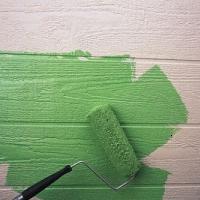Mullumbimby Action Group -> articles -> banksia_awards
Woolworths Finalist in 'Greenwashing' Awards
So Woolworths NSW is a finalist in the 2009 Banksia Awards in the
Large Business Sustainability section. I don’t know whether to laugh or
cry.
The award is for incorporation of social, financial and environmental
responsibility initiatives by a large company, organisation or business.
Woolworths targets look like corporate 'greenwashing'. Are
these awards created for large corporations to pat themselves on the back
while doing minor things to look 'green'? Ed.
The “completed” targets are the easy (cheaper?) ones, such as a staff education program to encourage greater recovery of plastic and cardboard. The company also pats itself on the back for funding a CSIRO study on biodiesel availability.
Ditto for training its buyers “to help them understand issues and types of third party certification required from suppliers, so they can more effectively manage issues around ethical and sustainable sourcing”. The Chinese will love that.
Woolworths “did not have the opportunity” to work with the Green Building Council to develop a green star-rating tool for retail; nor it has not met its target to establish a forum with transport suppliers to develop a low carbon strategy.
Further, it did not trial the use of hybrid powered trucks for home deliveries or implement a waste audit program for all stores and distribution centres.
One could ask why the roofs of Woolworths’ 800 supermarkets are not covered in solar panels; why the company trucks food thousands of kilometers to places where local producers can provide fresher, cheaper food.
Environmental responsibility is more than painting your buildings green, putting staff in green uniforms and applying for coveted awards.
Let’s not start on Woolworths “social responsibility initiatives”. Ask the residents of places where Woolworths has tried or is trying to force itself onto communities that do not need or want it: Mullumbimby, Thornleigh, Lane Cove, Neutral Bay, Moree, Erskinville, Griffith, Palmers Island, Armidale, Mittagong, Dural, Bega, Lane Cove (NSW); Maleny, Sandgate, Samford, Bli Bli, Canungra (Qld); St Kilda, Shepparton, Doncaster East, Mt Evelyn, Seville (Vic) and Wallaroo (South Australia).
Graham Earle
Maleny QLD
| June 2025 | ||||||
|---|---|---|---|---|---|---|
| S | M | T | W | T | F | S |
| 1 | 2 | 3 | 4 | 5 | 6 | 7 |
| 8 | 9 | 10 | 11 | 12 | 13 | 14 |
| 15 | 16 | 17 | 18 | 19 | 20 | 21 |
| 22 | 23 | 24 | 25 | 26 | 27 | 28 |
| 29 | 30 | |||||
No events for today
Add your event here


